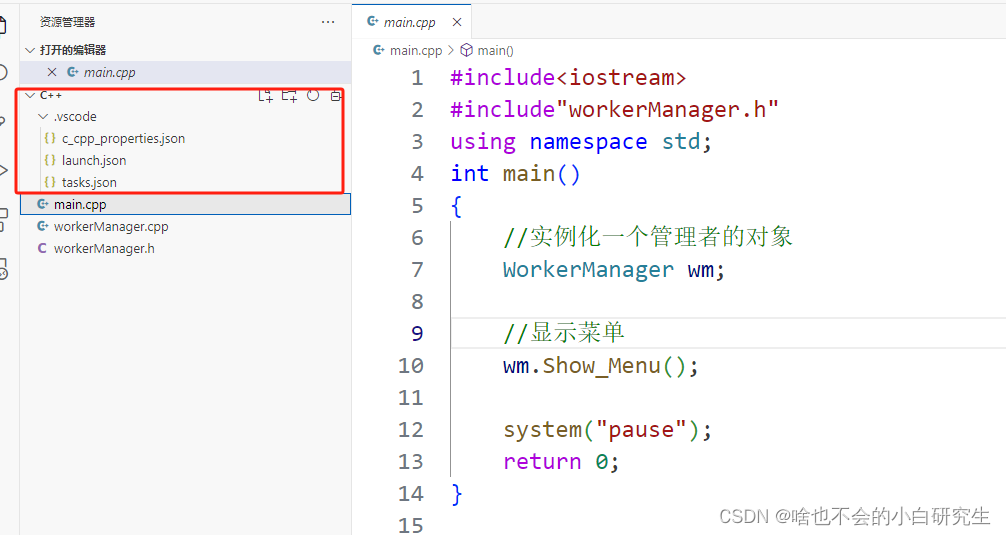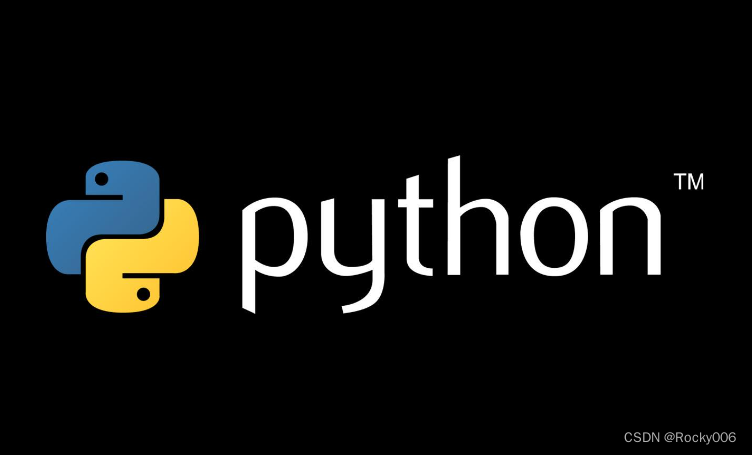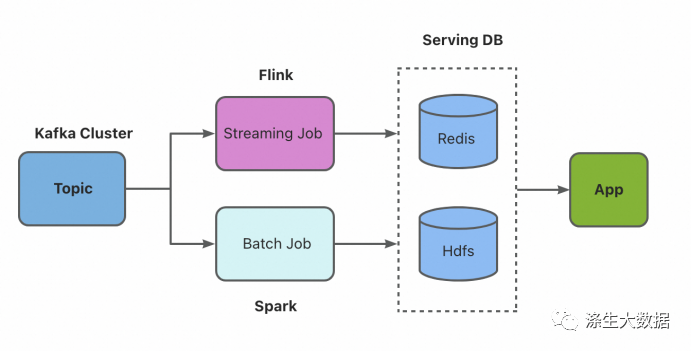本文介绍: 程序运行时产生的数据都属于临时数据,程序一旦允许结束都会被释放。通过文件可以将数据持久化。
5.文件操作
程序运行时产生的数据都属于临时数据,程序一旦允许结束都会被释放。通过文件可以将数据持久化
- C++中对文件操作需要包含头文件<fstream>
文件类型分为两种:
- 文本文件 – 文件以文本的ASCII码形式存储在计算机中
- 二进制文件 – 文件以文本的二进制形式存储在计算机中,用户一般不能直接读懂它们
操作文件的三大类:
- ofstream – 写操作
- ifstream – 读操作
- fstream – 读
5.1.1 写文件
- 写文件步骤
1.写包含头文件
#include <iostream>
2.创建流对象
ofstream ofs; // 写文件
3.打开文件
ofs.open("文件路径", 打开方式);
4.写数据
ofs << "写入的数据";
5.关闭文件
ofs.close();文件打开方式:
打开方式 解释
ios::in 为读文件而打开文件
ios::out 为写文件而打开文件
ios::ate 初始位置:文件尾
ios::app 追加方式写文件
ios::trunc 如果文件存在先删除,再创建
ios::binary 二进制方式注意:文件打开方式可以配合使用,利用|操作符
例如:用二进制方式写文件 ios::binary | ios::out
#include <iostream>
using namespace std;
// 1.包含头文件
#include <fstream>
void test01() {
// 2.创建流对象
ofstream ofs;
// 3.打开文件 指定打开方式
ofs.open("test.txt", ios::out); // 参数1:文件路径;参数2:文件打开模式
// 4.写入数据
ofs << "hello, world!" << endl;
ofs << "hello, c++!" << endl;
ofs << "姓名: 张三"<<endl;
ofs << "年龄: 18"<<endl;
ofs << "性别: 男"<<endl;
// 5.关闭文件
ofs.close();
}
int main() {
test01();
return 0;
}总结:
- 文件操作必须包含头文件 fstream
- 写文件可以利用 ofstream,或者fstream类
- 打开文件时候需要指定操作文件的路径,以及打开方式
- 利用<<可以向文件中写数据
- 操作完毕,要关闭文件
5.1.2 读文件
- 读文件与写文件步骤相似,但是读取方式相对于比较多
读文件步骤如下:
1.包含头文件
#include <fstream>
2.创建流对象
ifstream ifs; // 读文件
3.打开文件并判断文件是否打开成功
ifs.open("文件路径", 打开方式);
4.读数据
四种方式读取
5.关闭文件
ifs.close();#include <iostream>
// 1.包含头文件
#include <fstream>
using namespace std;
#include <string>
// 文本文件 读文件
void test01() {
// 2.创建流对象
ifstream ifs;
// 3.打开文件 并且判断是否打开成功
ifs.open("test.txt", ios::in);
if (!ifs.is_open()) {
cout << "文件打开失败" << endl;
return;
}
// 4.读数据
// 第一种
// char buf[1024] = {0};
// while (ifs >> buf) {
// cout<<buf<<endl;
// }
// 第二种
// char buf[1024] = {0};
// while(ifs.getline(buf, sizeof(buf))) {
// cout<<buf<<endl;
// }
// 第三种
string buf;
while(getline(ifs, buf)) {
cout<<buf<<endl;
}
// 第四种
// char c;
// while((c=ifs.get())!= EOF) { //EOF end of file
// cout<<c;
// }
// 5.关闭
ifs.close();
}
int main() {
test01();
return 0;
}总结:
- 读文件可以利用ifstream,或者fstream类
- 利用is_open函数可以判断文件是否打开成功
- close关闭文件
5.2 二进制文件
以二进制的方式对文件进行读写操作
打开方式要指定为 ios::binary
5.2.1 写文件
二进制方式写文件主要利用流对象调用成员函数write
- 函数原型:ostream& write(const char *buffer, int len);
- 参数解释:字符指针buffer指向内存中一段存储空间(可以是数组,也可以是c++字符串),len是读写的字节数
#include <iostream>
using namespace std;
#include <fstream>
// 二进制文件 写文件
class Person {
public:
char m_Name[64]; // 姓名
int m_Age;// 年龄
};
void test01() {
// 1.包含头文件
// 2.创建流对象
ofstream ofs;
// ofstream ofs.open("person.txt", ios::out | ios::binary);
// 3.打开文件
ofs.open("person.txt", ios::out | ios::binary);
// 4.写文件
Person p = {"张三", 20};
ofs.write((const char*)&p, sizeof(Person));
// 5.关闭文件
ofs.close();
}
int main() {
test01(); // 写文件
return 0;
}5.2.2 读文件
二进制方式读文件主要利用流对象调用成员函数read
- 函数原型:istream& read(char *buffer, int len);
- 参数解释:字符指针buffer指向内存中一段存储空间,len是读写的字节数
- 文件输入流对象,可以通过read函数,以二进制方式读数据
#include <iostream>
#include <fstream>
using namespace std;
class Person {
public:
char m_Name[64]; //姓名
int m_Age; //年龄
};
// 二进制文件 读文件
void test01() {
// 1.包含头文件
// 2.创建流对象
ifstream ifs;
// 3.打开文件 判断文件是否打开成功
ifs.open("person.txt", ios::in | ios::binary);
if(!ifs.is_open()) {
cout<<"打开文件失败"<<endl;
return;
}
// 4.读文件
Person p;
ifs.read((char*)&p, sizeof(Person));
cout<<"姓名:"<<p.m_Name<<" 年龄:"<<p.m_Age<<endl;
// 5.关闭文件
ifs.close();
}
int main() {
test01();
return 0;
}原文地址:https://blog.csdn.net/weixin_41987016/article/details/135923925
本文来自互联网用户投稿,该文观点仅代表作者本人,不代表本站立场。本站仅提供信息存储空间服务,不拥有所有权,不承担相关法律责任。
如若转载,请注明出处:http://www.7code.cn/show_63575.html
如若内容造成侵权/违法违规/事实不符,请联系代码007邮箱:suwngjj01@126.com进行投诉反馈,一经查实,立即删除!
声明:本站所有文章,如无特殊说明或标注,均为本站原创发布。任何个人或组织,在未征得本站同意时,禁止复制、盗用、采集、发布本站内容到任何网站、书籍等各类媒体平台。如若本站内容侵犯了原著者的合法权益,可联系我们进行处理。








